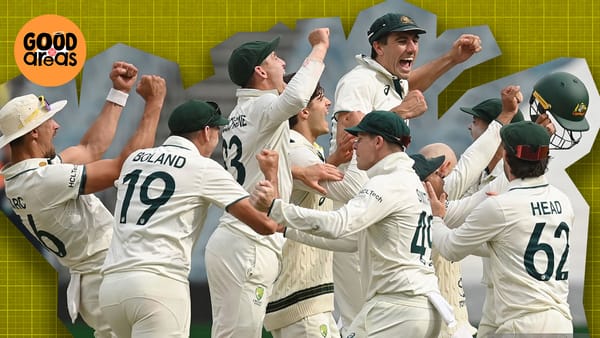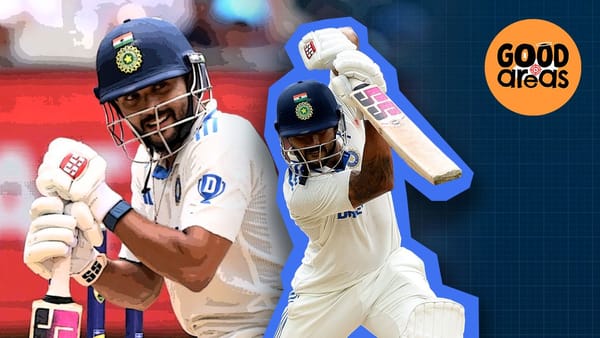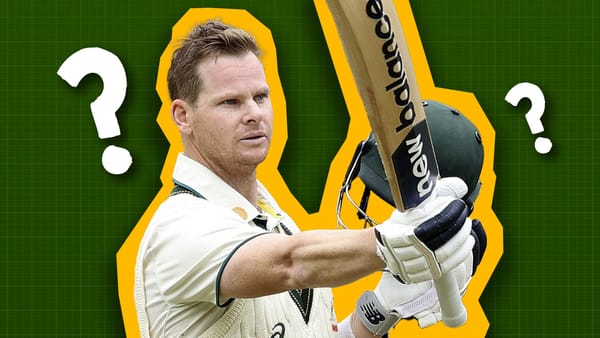How Sikandar Raza went from a software engineer to a warrior
And the question of whether he is the most valuable white ball player around.
When the Greek king Alexander the Great conquered Persia, the Persians called him Sikandar, meaning ‘defender’ or ‘warrior’. It’s not a light or casual name. Sikandar Raza started with a mission.
But his original dream was to become a pilot. An eye condition prevented him from doing so, but he ended up becoming a software engineer. Cricket was there, but not as a profession.
There is no doubt to make it to his level in Zimbabwe cricket, especially the mess it was in his part of his career you need to be a warrior. But the software engineer needs a brain too. He is a very smart player. Remember his ice-cold finish against CSK in this year’s IPL?
He ran a triple on the last ball to win it for Punjab. That was him in top-level problem-solving mode.
A tweet from Random Cricket Stats got me thinking.

There is definitely something to look at here. While he is not the biggest or the best white-ball player of this generation, Raza has started getting the deserved recognition in the last couple of years. It is hard to overlook what he has done.
But that wasn’t always the case. C.S. Chiwanza said that in 2017/18 there seemed to be an effort to push Raza out of the Zimbabwe national team. He was dropped because he did not ‘exhibit the right levels of professionalism and desire to serve the country’. Both of those statements seem bizarre now.
When he signed for a team in Canada’s T20 league, ZC refused to give him an NOC. So he terminated his contract with his board. He had only one month left on a one-year contract. He was the only ‘senior player’ with a short-term deal. Most guys had three or four-year contracts. Raza had not been paid match fees for a year and was owed five months’ salary. ZC was in effect refusing him the opportunity to feed his family despite not being able to pay him what they owed him. One guy at ZC called Raza an ungrateful player. ZC sympathizers mauled Raza on social media.
That was six years ago. Since then Sikandar Raza has been Zimbabwe’s best player.
Particularly in major tournaments with both bat and ball. he lifted up what was a decent but flawed team to levels no one expected. Including their upset against Pakistan in the T20 World Cup.

Raza was also an integral part of Lahore Qalandars’ title-winning run earlier in 2023. He also played his first IPL season this year and had a decent all-round campaign. It was only in 2018 that I was working with his agent, trying to get him a single gig, and no one wanted him.
Now Raza is Zimbabwe’s 3rd highest run-getter of all time in T20 internationals and the 8th highest in ODI cricket. He barely misses out on a top 10 spot in terms of ODI wickets, and is 6th on the list for the highest wicket-takers in T20Is. That is a commendable achievement, regardless of the team you’ve played for in your career. If nothing, that certainly makes him an all-time great for Zimbabwe.




But let's get back to the original question. Is he the world's most valuable white ball player in the last couple of years?
The genius of all-rounders can't just be seen in their batting or bowling averages. They stretch the team. Give you extra batters and bowlers. They turn 11 into 12. It’s an incredible feat, and it’s why we talk about them so much, even when you look at their numbers sometimes and they don’t seem as sexy. Here's a bunch of all-rounders who have scored over 500 runs and taken 20 wickets in both ODIs and T20Is.


This tells us that Raza has been among the few net positive all-rounders in terms of net average in both formats. While he might not seem the best player on this metric, he’s certainly something quite special.
We see that 2023 is definitely his best year as a batter in this format, with the last 3 years being his most dominant both in terms of average and strike rate. He has produced exactly the sort of returns one would expect from a good middle-order batter. His slower years have come when he used to bat in the top 3. Since shifting to the middle-order role, he has performed very well.

Raza bowls off-spin with a flatter trajectory. His bowling really went to another level when he copied the Sunil Narine style and started delivering knuckleballs and other variations up his sleeve. He turned himself from a regular offspinner to a defensive weapon. This year has been one of his most productive with the ball in ODI cricket.

Sikandar batted like a man possessed in 2022. Not only did he have an incredible improvement compared to his past record, but he was also one of the best T20I cricketers last year. And he didn’t just start slogging, mostly because he couldn’t afford to. He often came into bat in scenarios where he had to guide Zimbabwe home. A consistent run at number 5 got the best out of him as a T20 batter.

Raza did not just hit his T20 batting peak in 2022. He also took nearly twice the wickets in 2022 than he did in the first 9 years of his career, going at two runs per over lesser and having played an entire T20 World Cup on Australian soil. He put up an absolute masterclass in defensive off-spin bowling. What makes this even more impressive is that he remodelled his action because of a potential bone marrow infection.

He has gone from a part-time bowler to prime Sunil Narine in the blink of an eye. At the top level his bowling doesn’t seem as replicable. We’ve already seen slippage in the PSL and IPL. But he’s a lot better than many fifth-bowling choices.
At the World Cup qualifiers, he was a monster. In the match against the West Indies, he was 68 from 58 and came back later to pick up a couple of wickets. This is the sort of thing he did in the T20 World Cup as well.
That wasn’t even the big match for him. Against the Netherlands, he took four of the Netherlands’ six wickets. Without him, the Dutch might have made 400. And then he came out with the bat and proved that, scoring not only a beast of a hundred but the quickest in Zimbabwe's history.
When he came to the crease they were 162/3 after 24 overs. 17 overs later they had chased down 316 in under 41 overs. His hundred was from 54 balls. This is not a normal thing for a Zimbabwean cricketer.
But even less so for a journeyman who in his early 30s was considered washed by his own team.
Neither is the fact that Raza was also nominated for 3 major men’s ICC awards - ODI POTY, T20I POTY and Cricketer of the Year.
So is he the most valuable player in white ball cricket? No. At the top level, his bowling isn’t as good, and his batting is a little more great cameos.
The fact that he can pull off these kinds of catches at his age is certainly worth a bonus that almost gets him the crown.
But that is the point, what we are talking about here is a 37-year-old cricketer who was a software engineer playing for a nation whose cricket team couldn’t afford boots and was banned by the ICC. He was a middling player of little consequence who has become a World Cup destroyer and plays in the biggest league on earth. He took them to the second round of the last World Cup and almost carried them into this tournament as well. Players don’t usually have peaks like this so late in life. And Zimbabwean cricketers haven’t reached heights like this playing for their nation in a long time. He may not be the most valuable player in white ball cricket, but no team relies on any player as much as Zimbabwe do with him. He is a frontline batter and bowler. He gives them five strong bowlers in every match. His power gives them someone other teams fear.
This is a victory for self-improvement. He has rinsed every bit of talent out of himself and professionalised his own career even from the darkest days of Zimbabwe cricket all in his 30s.
Sikandar Raza has lived up to his name, he may have started as a software engineer, but he’s a warrior now.




